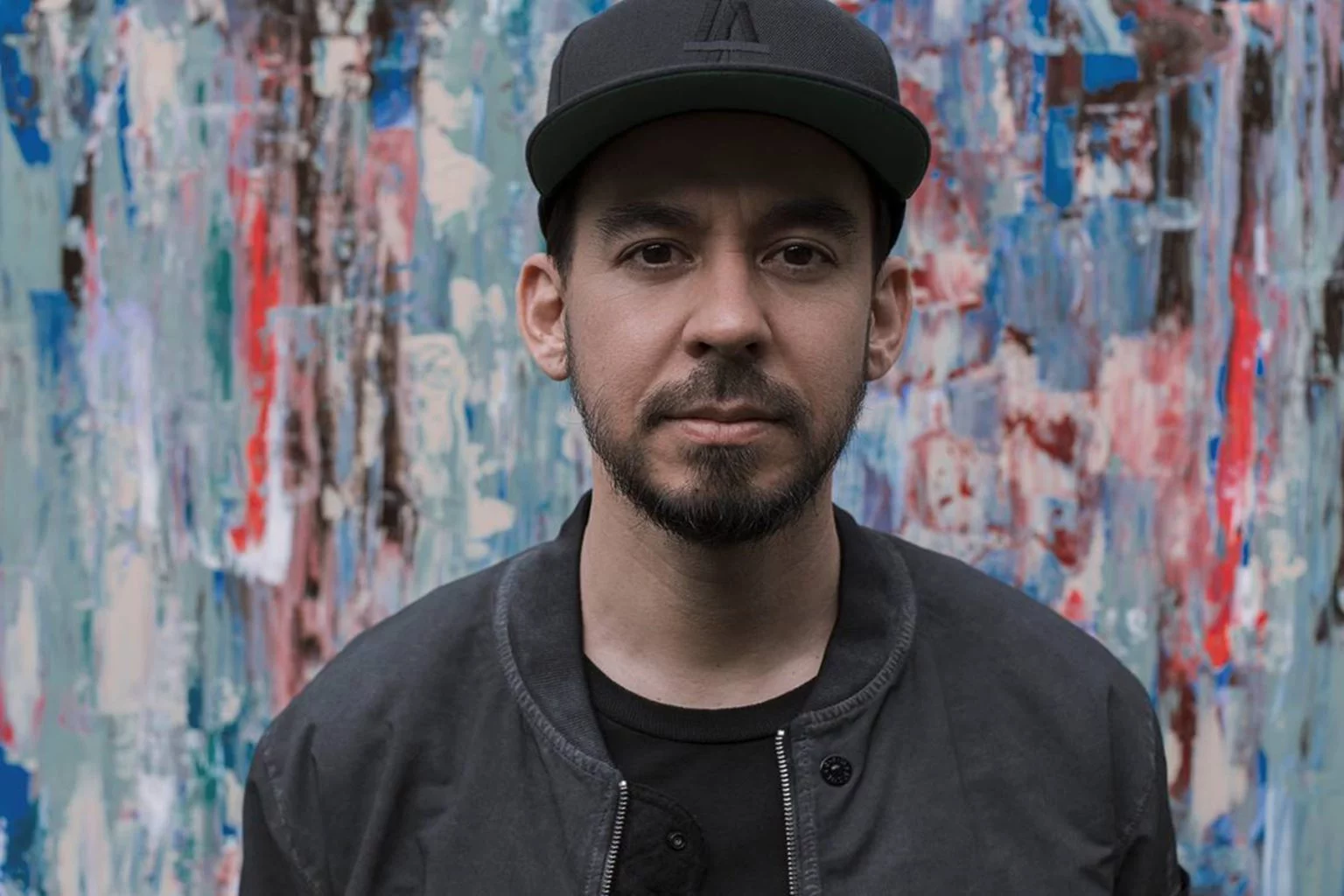
Mike Shinoda
Musical VisionaryBiography
Born Michael Kenji Shinoda on February 11, 1977, in Agoura Hills, California, Mike Shinoda has emerged as one of the most versatile and influential figures in contemporary music. Of Japanese-American descent, Mike’s multicultural background has shaped his artistic perspective and creative approach. From an early age, Shinoda displayed remarkable talent across multiple disciplines, with his mother encouraging his early musical explorations in piano, and later expanding to guitar and creating his own beats.
After graduating from Agoura High School, Shinoda pursued formal education at the prestigious Art Center College of Design in Pasadena, where he earned a Bachelor of Fine Arts in Illustration in 1998. This formal training in visual arts would prove instrumental in his multifaceted career, allowing him to design album artwork, merchandise, and develop the visual identity for his musical projects. During his college years, Shinoda famously balanced his design studies with his burgeoning musical ambitions, often joking that he “made money doing design so I could spend it doing music.”
In 1996, while still in college, Shinoda co-founded the band Xero, which would later evolve into Linkin Park. The band’s groundbreaking debut album, “Hybrid Theory” (2000), revolutionized the rock landscape seamlessly blending heavy rock, hip-hop, and electronic elements. As Linkin Park’s co-vocalist alongside the late Chester Bennington, principal songwriter, producer, and multi-instrumentalist, Shinoda was integral to crafting the band’s distinctive sound that has sold over 100 million albums worldwide.
Beyond Linkin Park, Shinoda has pursued numerous creative avenues, including his hip-hop side project Fort Minor, established in 2004, and his solo career launched in 2018 with “Post Traumatic” following Bennington’s passing. He has also distinguished himself as a producer for various artists, a visual artist with exhibitions of his work, and an entrepreneur with ventures in technology and music production. Throughout his multidisciplinary career, Shinoda has consistently demonstrated an innovative approach to creative expression, blurring the boundaries between musical genres and artistic mediums.
Musical Journey
Mike Shinoda’s musical journey began with early influences spanning from classical music to hip-hop legends like Boogie Down Productions and rock innovators including Rage Against The Machine and the Beastie Boys. After co-founding Xero in 1996, which evolved through name changes including Hybrid Theory before settling on Linkin Park, Shinoda helped craft a revolutionary sound that would define a generation. The band’s 2000 debut album “Hybrid Theory” became the best-selling album of 2001, catapulting them to global fame.
As Linkin Park continued to evolve through albums like “Meteora,” “Minutes to Midnight,” and “A Thousand Suns,” Shinoda’s creative fingerprints were unmistakable, both as a songwriter and producer. In 2005, he branched out with Fort Minor, releasing “The Rising Tied,” which featured the hit “Remember the Name” and the personal track “Kenji,” exploring his family’s experience in Japanese internment camps. Following the tragic loss of Chester Bennington in 2017, Shinoda channeled his grief into his solo debut “Post Traumatic” (2018). During the 2020 pandemic, he embraced innovation creating music live on Twitch with fan input, resulting in the three-volume “Dropped Frames” series. This pioneering approach to collaborative creation underscores his commitment to pushing boundaries and evolving as an artist.

Key milestones in his career
- 1996: Co-founded Xero, which would later become Linkin Park
- 1998: Graduated from Art Center College of Design with a B.F.A. in Illustration
- 2000: Released Linkin Park’s debut album “Hybrid Theory,” which sold over 30 million copies worldwide
- 2002: Produced Linkin Park’s remix album “Reanimation” and designed its cover art
- 2005: Launched hip-hop side project Fort Minor, releasing “The Rising Tied”
- 2007-2017: Continued evolution with Linkin Park through multiple chart-topping albums
- 2018: Released solo debut “Post Traumatic” following Chester Bennington’s passing
- 2020: Created the “Dropped Frames” trilogy through interactive Twitch sessions
- 2021: Released “Happy Endings” featuring iann dior and UPSAHL
- 2021: Served as executive producer on Grandson’s debut album “Death of an Optimist”
Discography
-
Solo Career
- “Post Traumatic” EP (2018) Initial three-track release exploring grief following Chester Bennington’s passing
- “Post Traumatic” (2018) Full-length debut album featuring 16 tracks including “Crossing a Line” and “Make It Up As I Go”
- “Dropped Frames, Vol. 1-3” (2020) Trilogy of predominantly instrumental albums created live on Twitch with audience input
- “Happy Endings” (featuring iann dior and UPSAHL) (2021) Single release blending pop, hip-hop and electronic elements
-
Fort Minor
- “The Rising Tied” (2005) Debut album featuring “Remember the Name” and “Where’d You Go”
- “Welcome” (2015) Single marking Fort Minor’s return after a decade
- With Linkin Park Seven studio albums from “Hybrid Theory” (2000) to “One More Light” (2017), selling over 100 million records worldwide
- Production Credits Produced for numerous artists and served as executive producer on albums like Grandson’s “Death of an Optimist” (2021)
Watch Mike Shinoda
Musical Abilities
Mike Shinoda possesses an extraordinary range of musical abilities that have established him as one of the most versatile artists in contemporary music. His diverse skill set spans multiple instruments, production techniques, and vocal styles.
- Multi-instrumentalist – Proficient in piano, guitar, keyboards, and various electronic instruments
- Dual vocal capability – Skilled in both rapping and singing, with a distinctive flow and melodic sense
- Production expertise – Professional-level production skills honed through decades of studio work
- Compositional range – Ability to write across genres from heavy rock to hip-hop, electronic, and orchestral arrangements
- Sound design – Creates unique sonic textures and electronic elements that define his distinctive production style
What truly distinguishes Shinoda is his ability to synthesize these diverse skills into cohesive artistic expressions. His background in classical piano training provides a foundation for his melodic sensibilities, while his hip-hop influences inform his rhythmic approach and production techniques. As a producer, Shinoda has developed a signature sound characterized layered arrangements, textural depth, and meticulous attention to sonic detail. His ability to move seamlessly between instruments, production roles, and vocal styles gives him unique versatility as both a solo artist and collaborator. This comprehensive musicianship allows him to realize his creative vision at every stage of the production process.
Artistic Style
Mike Shinoda has developed a distinctive artistic style that transcends traditional genre boundaries:
- Integration of diverse genre elements from rock, hip-hop, electronic, and orchestral music
- Lyrics that balance personal vulnerability with universal themes and social commentary
- Compositional approach featuring layered instrumentation and precise sound design
- Production style that bridges analog and digital techniques with meticulous attention to detail
- Ability to incorporate visual arts sensibility into musical projects through cohesive conceptual frameworks
- Performance presence that connects emotional authenticity with technical precision
“Mike Shinoda’s music is characterized his fearless approach to genre fusion, combining elements of nu metal, alternative rock, hip-hop, and electronic music into a cohesive sound. His compositions demonstrate technical proficiency and emotional depth, reflecting his background in both formal music training and street-inspired hip-hop. Whether producing, performing, or designing album artwork, Shinoda brings a multidisciplinary perspective that elevates his artistic output beyond conventional boundaries.” — Description of his artistic approach





